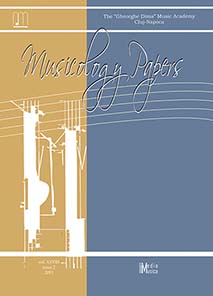Accepting or rejecting liturgical rules in the Ecumenical Patriarchate of Constantinople in the 18th century. Attempts at Notational Reform: The case
Accepting or rejecting liturgical rules in the Ecumenical Patriarchate of Constantinople in the 18th century. Attempts at Notational Reform: The case
Author(s): Kritikou FloraSubject(s): Music
Published by: MediaMusica
Keywords: Notational reform; Agapios Paliermos; alphabetical system
Summary/Abstract: The Byzantine musical notation and its right performance have been discussed already during the second half of the 15th century. Chrysanthos of Madytos refers to the says of Ioannes Trapezountios, who in the mid-18th century supported that the long musical teaching made it complicated and that it was indispensable to have a notational system easier and simpler. Some years after the death of Petros Peloponesios, at the end of the 18th century, Agapios Paliermos, after having spent several years in Europe where he was studying the Western music, presented two notational methods, the first one based on the staff notation and the second one alphabetical. However, the reactions against Agapios’ staff system - mainly came from Iakovos protopsaltes - have not permitted its essential adoption. Iakovos protopsaltes has been the major obstacle to the application of his system. According to Chrysanthos of Madytos’ testimony two facts are referred as the impediments: a. Iakovos has never been persuaded that the Byzantine notation had to be changed and b. his ironical and satirical behavior towards Agapios, his person and his teaching method frustrated the creator of the new notational system. Agapios’ attempt does not have to be considered as a self-centered movement in order to discredit and eliminate the traditional Byzantine notational system and to impose his own method. His attempts on notational reform have not been fruitful because they have been really radical, while, on the contrary, the new analytical method, which has finally been chosen, was a bright system with several elements of the staff notation occurring beneath the Byzantine signs. Nevertheless, Agapios’ notational systems, clearly turned towards the Western notation and the Ancient Greek music, have been the beginning of sequence of analogous attempts of the 19th century, such as the notational system of Georgios Lesvios, the alphabetical systems of Bucharest and the one of Paisios of the Monastery of Xeropotamos, or the attempts to harmonize the Byzantine chant and, clearly, the whole „musical issue” of the beginning of the 20th century.
Journal: Lucrări de Muzicologie
- Issue Year: 2013
- Issue No: 2
- Page Range: 46-59
- Page Count: 14
- Language: English
- Content File-PDF

